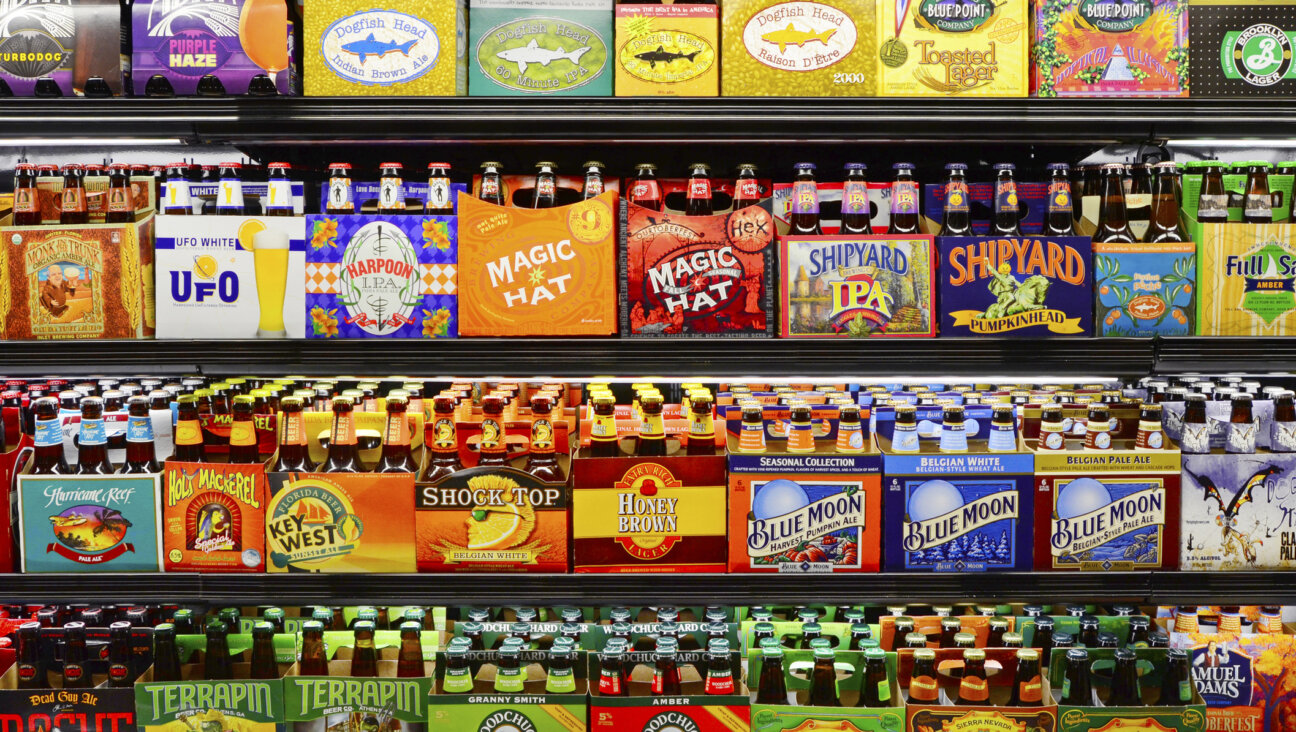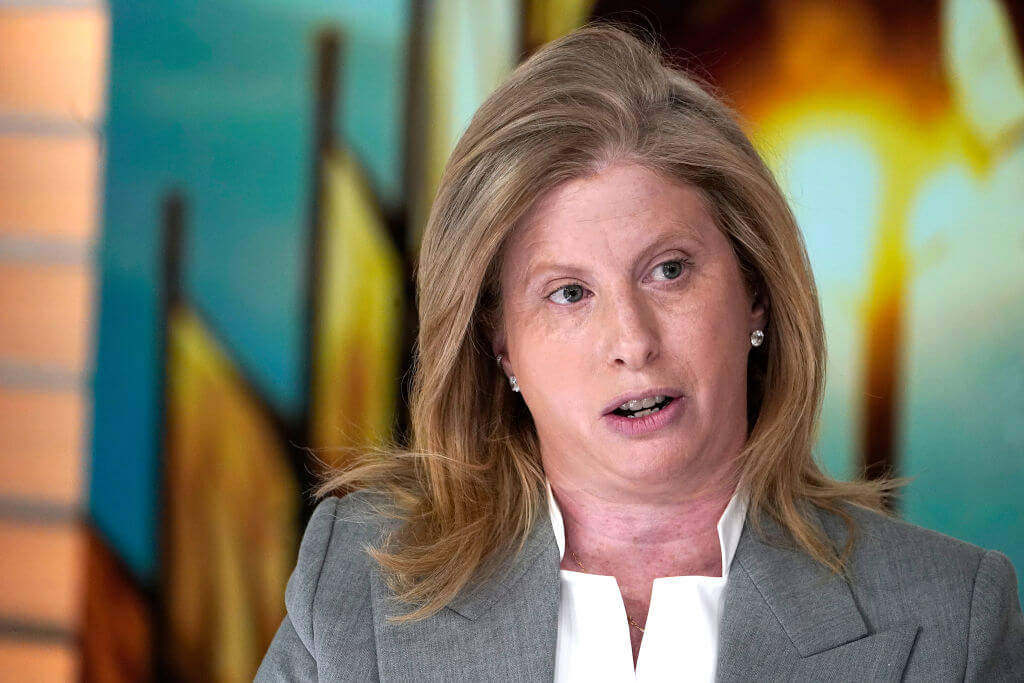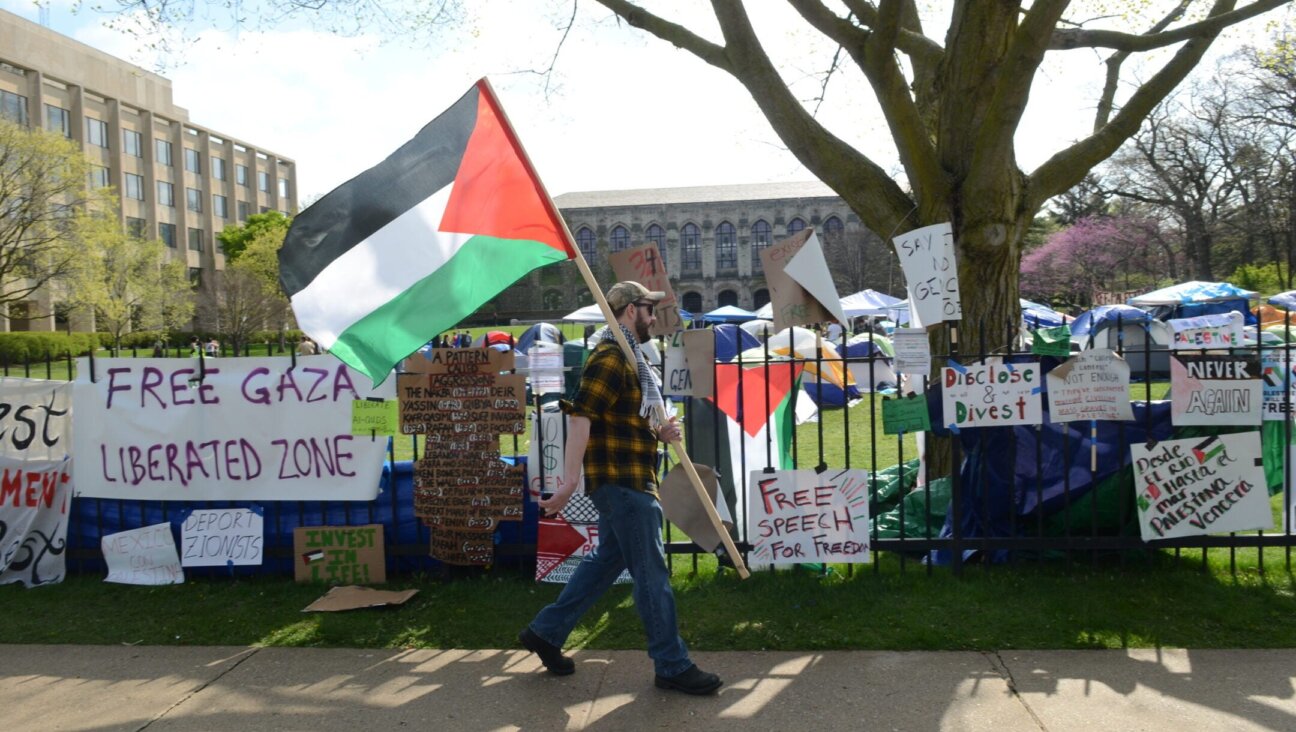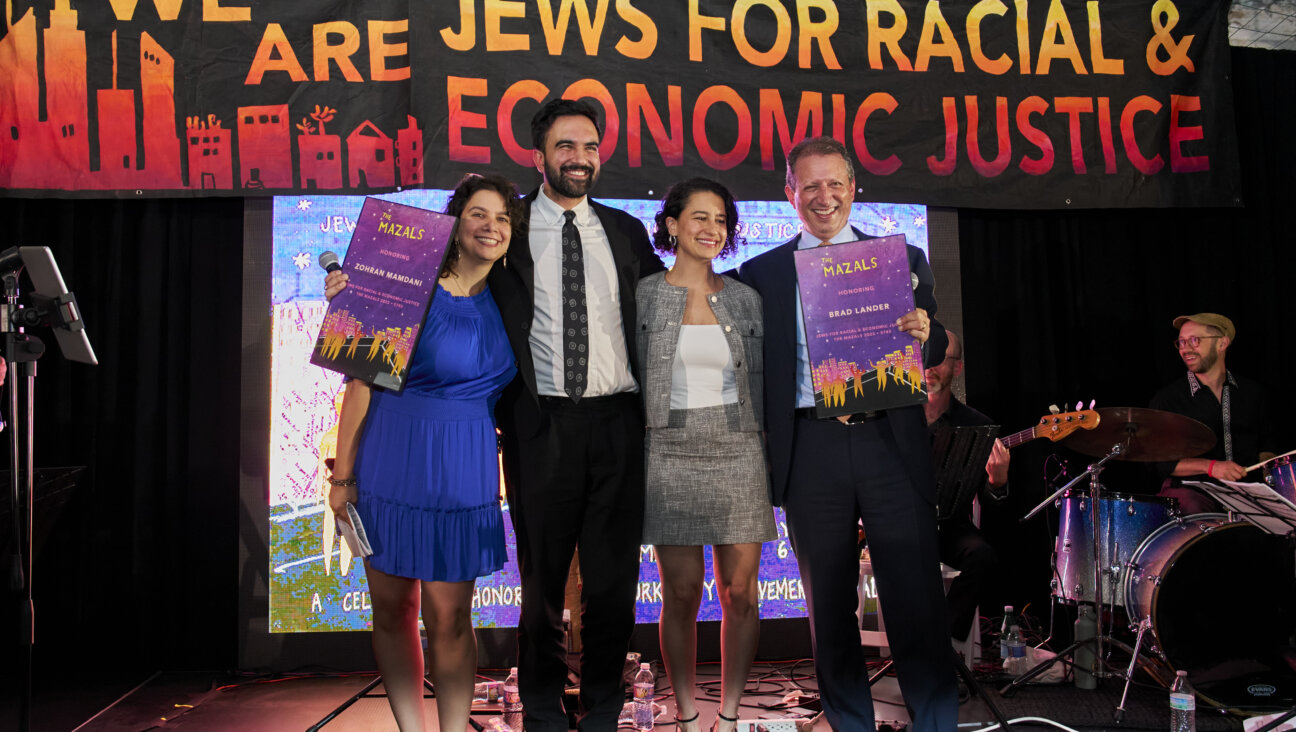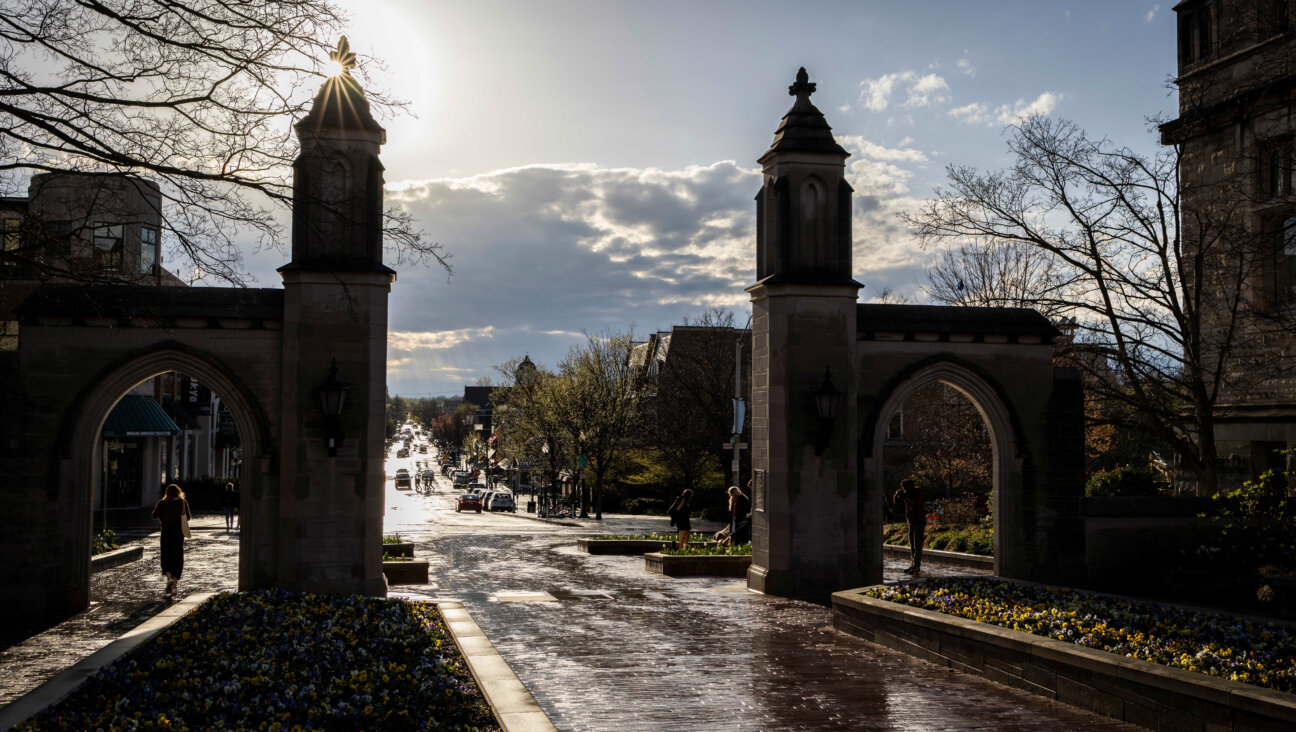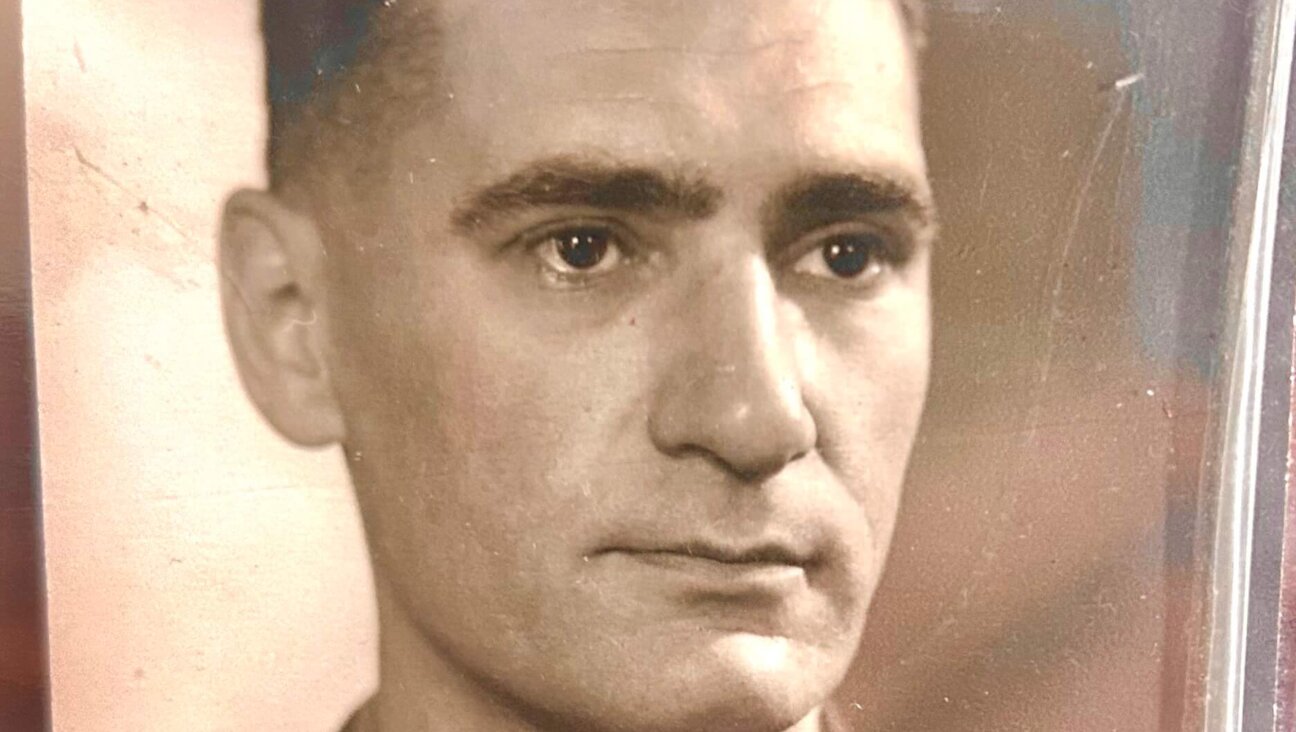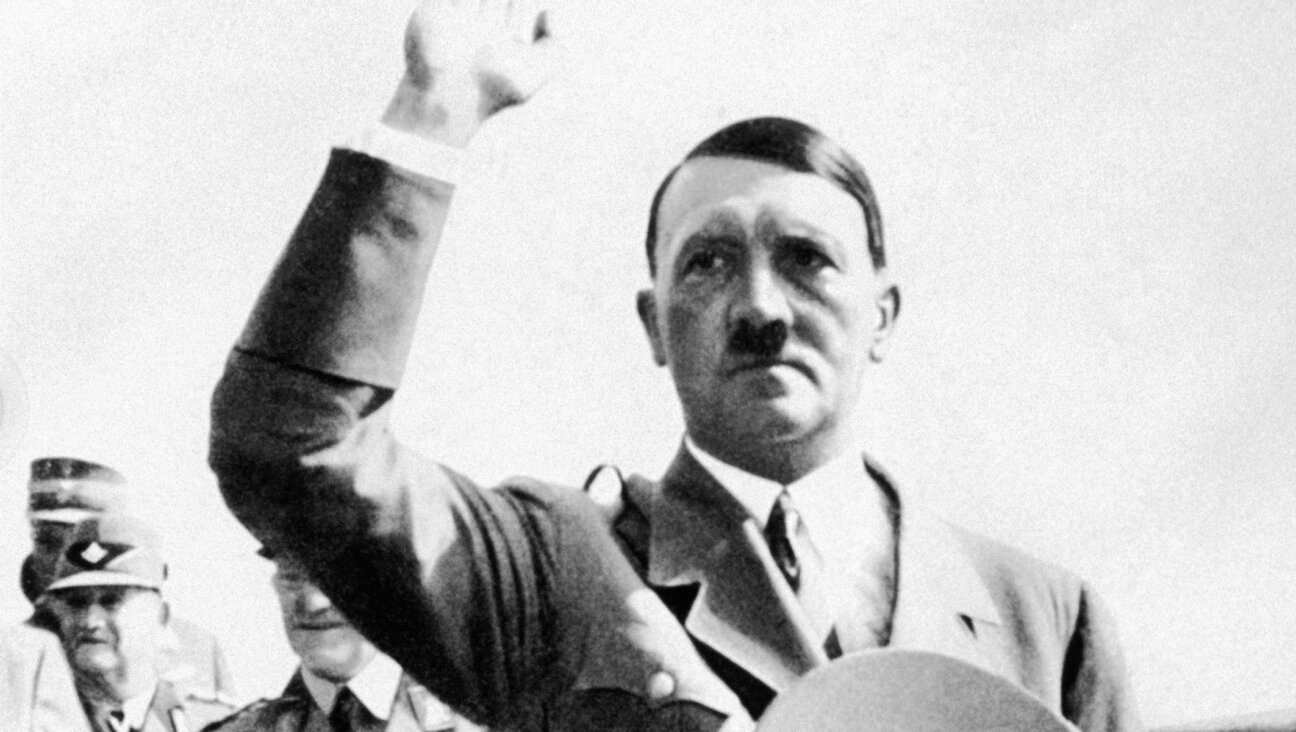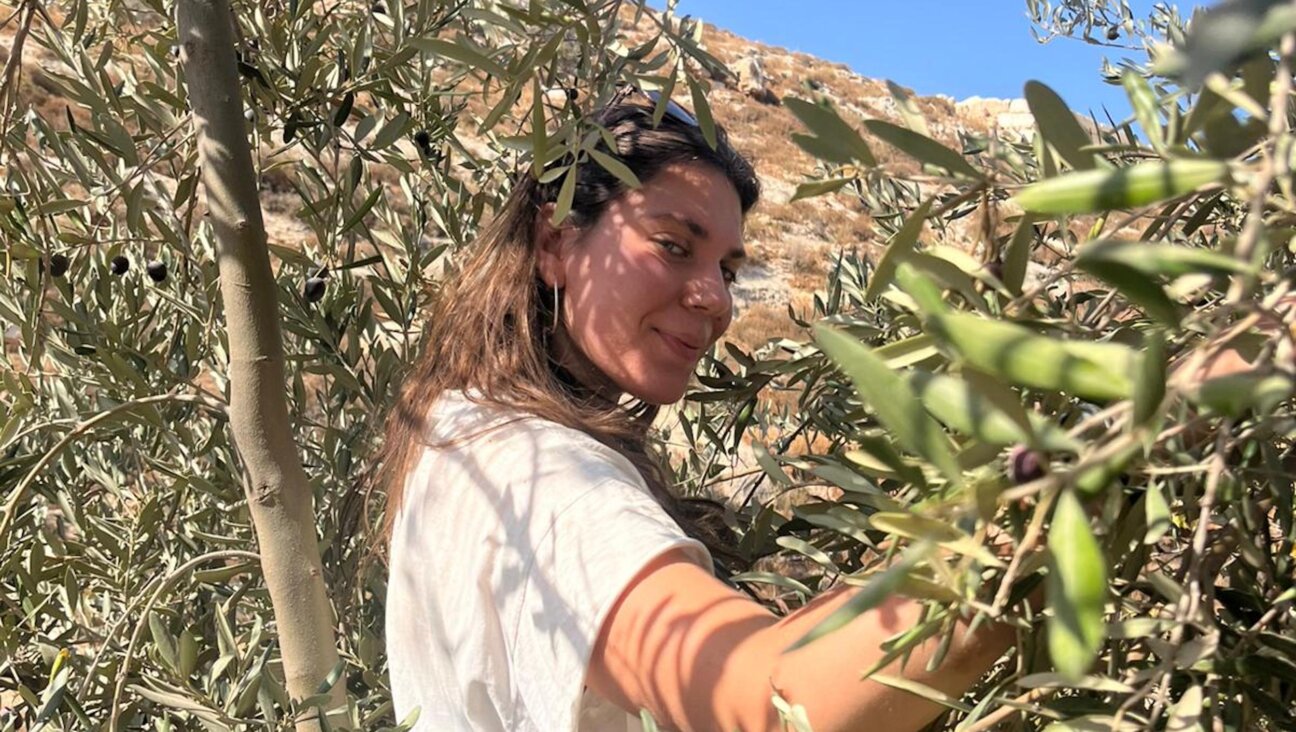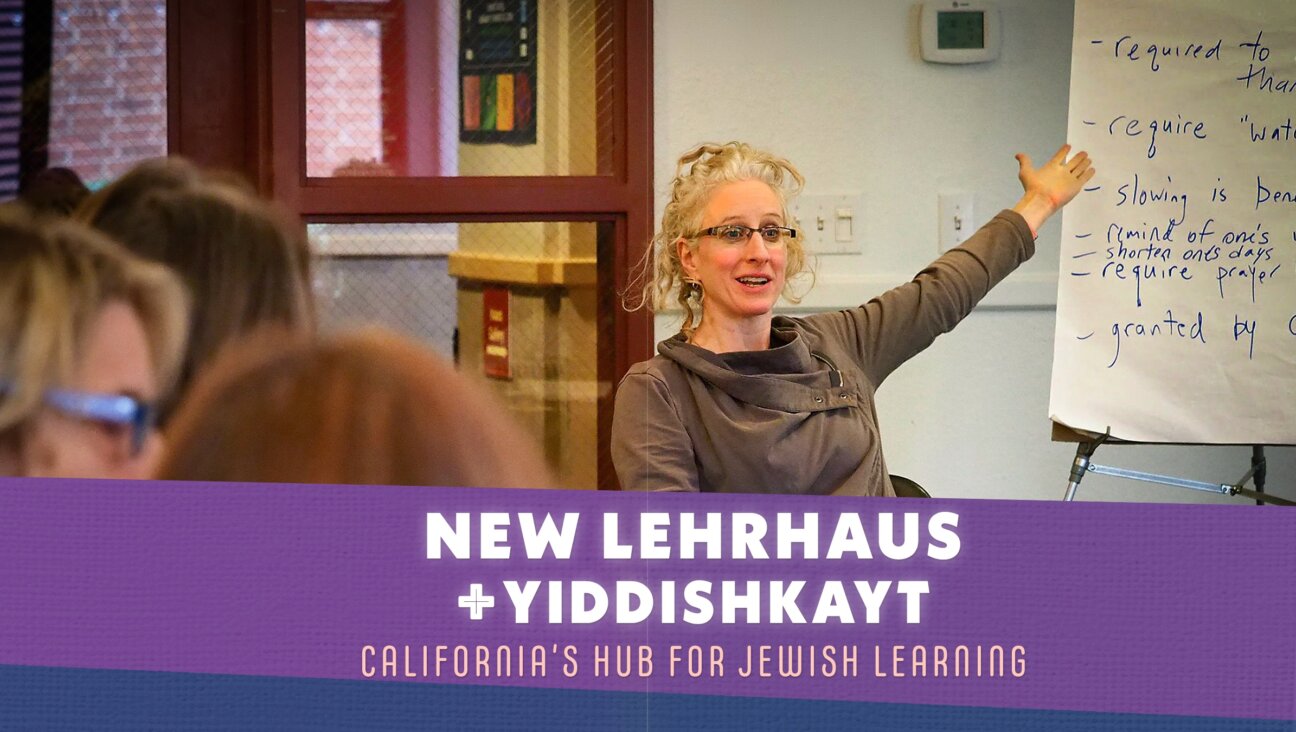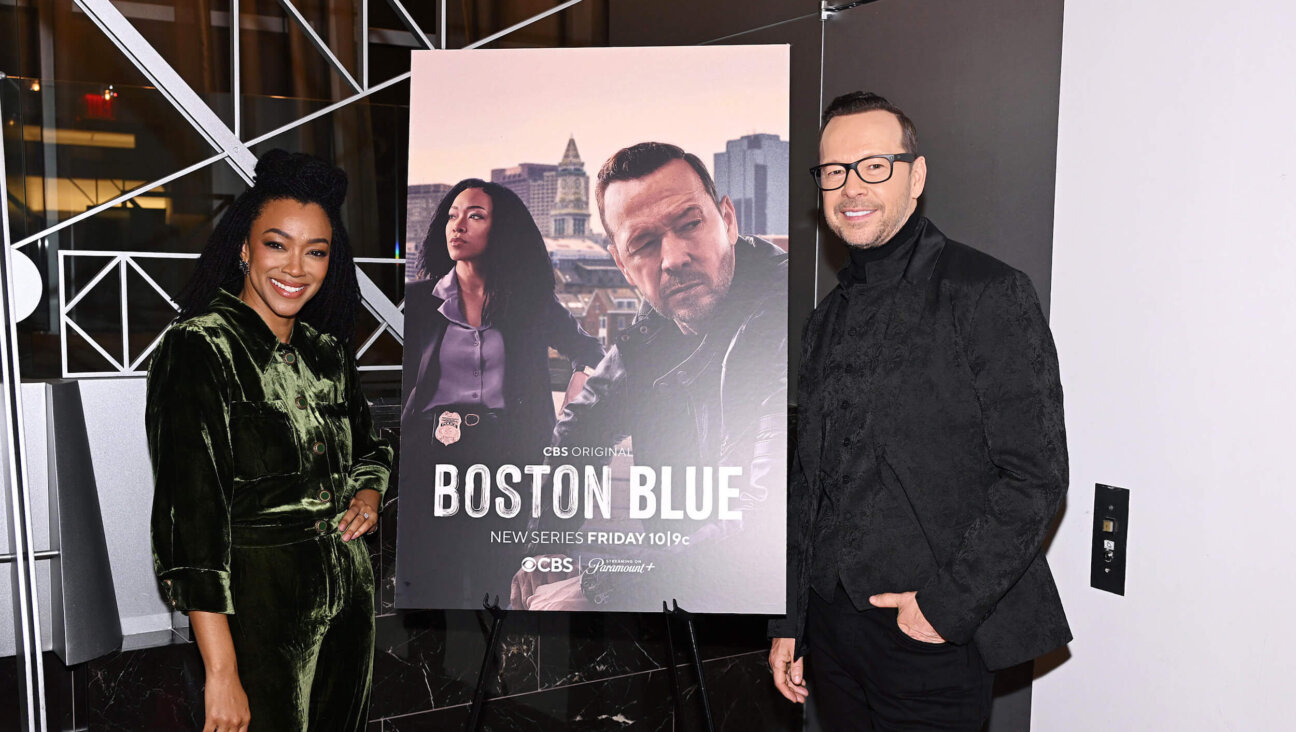The Jerusalem Street at the Epicenter of the Violence

Image by Getty Images
Like so many places in this divided city, the street where several recent terrorist stabbings have taken place in Jerusalem’s Old City goes by two names.
To Jews, it is HaGai Street, and to Palestinians, it’s Al Wad. In English, it’s the Valley. Over its 2,000-year existence, countless people have walked the street’s pale brown stones. Today it is part of the land that Israel annexed after 1967, claiming Jerusalem as its “reunified eternal capital.” The international community considers it occupied territory.
Now, after the two attacks on Israeli Jews by Palestinians over a four-day period on Valley Street, a series of slim, gray metal detectors has been erected on the ancient artery.
The metal detectors were in active use on a Sunday morning in early October as Israeli police picked teenage Palestinian boys off the street and forced them to walk through to check for weapons, sometimes patting the boys’ pockets on the other side for double assurance. A few yards from the street’s entrance was the government’s rationale for the heightened security: A pile of votive candles were slowly melting into the tan stones where Nehemia Lavi and Aharon Bennett, Israeli Jews, were stabbed and killed by Mohammad Halabi, a 19-year-old Palestinian. According to Israeli police, Halabi first attacked Bennett and his wife. Lavi tried to help them and was knifed by Halabi, who grabbed his gun and began shooting, wounding Bennett’s young child in the leg. Halabi was then killed by Israeli police.
Days later and a bit farther down on Valley Street, police say, an 18-year-old Palestinian woman knifed an Israeli Jewish man in his 30s; the man then shot her. Since then, relations between Jews and Palestinians have quickly frayed. Palestinian attacks across Israel and the occupied West Bank have multiplied, killing seven since the beginning of October. And 30 Palestinians have been killed after stabbings by police or in clashes with the Israeli military in the West Bank, East Jerusalem and Gaza as a new Palestinian uprising against Israel’s military occupation appears to be gathering force.

Mark Twain Slept Here: In normal times, the array of shops that line the long street draws a mix of shoppers and tourists from all three faiths. Image by Naomi Zeveloff
In these tense times, Valley Street is an artery of anxiety. Running less than half a mile through the Muslim Quarter, the street is a thoroughfare for Jerusalem’s three major religions, ending at the most sensitive site in the land, known to Jews as the Temple Mount and to Muslims as the Noble Sanctuary. Under Islamic administration for many centuries, the site is off limits to Jewish prayer. The prohibition has political but also religious dimensions: Most mainstream rabbis say Jews are barred from trespassing because they risk defiling Jewish holy spaces from ancient times there. Yet in recent years Jewish politicians have made provocative visits to the site, stoking Muslim fears that Israel intends to upend the so-called “status quo” at the site. These fears, and Muslim leaders who are elevating them, are fueling the violence in Israel and in the occupied Palestinian Territories, and on Valley Street itself.
Muslims use four gates on Valley Street to access the Noble Sanctuary. Ultra-Orthodox Jews from West Jerusalem’s Mea Shearim neighborhood and nationalist Jews who have moved into the Old City’s Muslim Quarter use the street to get to the Western Wall, the Jewish prayer site that is part of the retaining wall of the Temple Mount. Christian pilgrims cross over Valley Street to visit the third, fourth and fifth stations of the cross; these are where Jesus fell with his cross, was met by his mother and then was assisted by Simon of Cyrene. In normal times, Valley Street hosts a mix of adherents of all three faiths, in addition to tourists, journalists and Israeli police.
Just after the first stabbings, police barred Palestinians who did not live, work or study in the Old City from entering its gates for two days. Now, foot traffic has returned to Valley Street along with hundreds of extra police officers, stationed in small groups every 60 feet. According to some, the narrow stone corridor is today the most heavily policed street in Jerusalem, if not in the world.
“It is as meaningful as it is combustible,” said Yuval Ben-Ami, a National Geographic guide who gives Old City tours.
On my first of two visits in early October, there was a makeshift memorial at the site of the Bennett and Lavi killings. It was outside a famous Old City site, the former Mediterranean Hotel, where Mark Twain stayed during his visit to Jerusalem. Today it is an apartment complex inhabited mostly by Orthodox nationalist Jews, their presence announced by Israeli flags flapping in the wind.
Since Israel’s seizure of the West Bank and East Jerusalem in the 1967 Six Day War, Israeli settler groups have been subsidizing Jews to move into the Old City’s Muslim Quarter in order to erode Palestinian claims to the area. The most active organization is Ateret Cohanim, the Crown of the Priests. The group says that it is bringing Jews back to the Muslim Quarter, where many Jews used to live until 1929, when Palestinian riots against their presence drove them out. Then, as now, Muslim fears of a Jewish takeover of Al Aqsa mosque helped fuel the violence.

Cops on the Beat: Metal detectors and a huge police presence now dominate the street. Merchants say business has plummeted. Image by Naomi Zeveloff
Yet unlike Palestinians who want to return to homes they fled or were forced from by Jews in Israel’s founding war, Ateret Cohanim has the backing of the state in its project. With help over the years from the Israeli government, and support from American donors abroad, Ateret Cohanim has acquired rights in many government-seized or controlled properties in East Jerusalem, often without public tender and well below market prices. A 1992 Justice Ministry report found that the government confiscated some of the Palestinian properties on the basis of unsupported affidavits submitted by Ateret Cohanim about their absentee-owner status. The government then transferred rights to the properties exclusively to Ateret Cohanim at preferred prices. While most of Ateret Cohanim properties were acquired from the government, it also buys out Arab tenants, or secures the eviction of those who fail to cooperate, replacing them with national religious Jewish settlers.
Daniel Luria, executive director of Ateret Cohanim, said he had never heard of the report and denied its allegations.
As Jews moved into the Muslim Quarter, Israeli police came to protect them. Now they are there in even greater numbers. The massive police presence has made the street look like the military occupation Israel long denied it was maintaining in East Jerusalem.

Moving In: Daniel Luria, executive director of Ateret Cohanim, says his group’s controversial property purchases and efforts to bring Jews into the Muslim Quarter promote coexistence. Image by Naomi Zeveloff
I met Luria outside the memorial, which jutted halfway into Valley Street and was cordoned off by the police. Behind the barricades, Orthodox Jewish teens lounged on plastic chairs, passing around bowls of orange-colored soup and chatting and praying. The memorial created a bottleneck on Valley Street, slowing the foot traffic to a crawl. A group of Palestinian men began singing softly, smirking at each other as they walked by. The Orthodox Jewish man speaking at the memorial paused until they passed.
Luria led me upstairs to a spacious apartment with vaulted white ceilings. In 1987, the apartment was purchased by then-government minister Ariel Sharon. According to news reports at the time, it had been owned by Jews for more than 100 years but had housed Palestinians since 1948. A yeshiva affiliated with Ateret Cohanim bought out the Palestinians and then sold Sharon the rights to the apartment. Sharon never lived there, but his purchase was wildly controversial, seen by Palestinians as a bid to cement Israeli control of East Jerusalem. On the day of my visit, Orthodox teenagers ran in and out of the front room, pulling bottles of water out of the refrigerator before running back downstairs to join the memorial.
Luria was visibly enraged by the murders of Bennett and Lavi, the latter of whom had been a rabbi at an Ateret Cohanim-affiliated yeshiva. Bennett’s wife, Odel Bennett, was also stabbed during the attack and survived. In her widely circulated account, she said she begged Palestinian shopkeepers on Valley Street for help, but they shrugged her off and even spat at her. Luria said it was evidence that there could still be “active terror” on the street. Israeli police say they are investigating the matter.
Luria was adamant that his organization played no role in the building tensions on Valley Street, and said that it was the only group in Jerusalem promoting “coexistence” there — albeit a “coexistence” under Jewish control. He offered his own explanation for the recent stabbings. “Radical Islam,” he said.
“We’re the last beacon of hope and normality and morality in this whole region,” Luria explained, “so violence is not going to drive us out, whatsoever. It will only make the opposite happen.” He predicted that more Jews would be galvanized to move to East Jerusalem in light of recent events, and Ateret Cohanim would help them: “There will be twice as many people living here and more houses being redeemed or reclaimed.”
When I returned to Valley Street a few days later, the memorial service was still going on. A few yards away I met Ali Jiddah, an African Palestinian whose family came to Jerusalem in the 1930s along with other immigrants from Chad, Nigeria, Senegal and Sudan. The community made its home on Valley Street, where Jiddah said he is in “dialogue with the stones.” He sneered at the “crazy elements” at the memorial down the block, calling the event a “provocation.”
Jiddah said that after Israel’s 1967 conquest, he grew tired of being harassed by Israeli soldiers and civilians. He became active in the Popular Front for the Liberation of Palestine, which, in 1968 led him to plant a bomb on West Jerusalem’s Jaffa Street, injuring nine Israelis. Sentenced to 20 years behind bars, he was released early in a 1985 prisoner exchange with Israel. Today he works as an alternative tour guide and as a public speaker.
“I hope you don’t mind if I smoke,” he said when we sat down at a juice cafe just outside Valley Street’s entrance. “It’s a habit I picked up in prison.”
For Jiddah, there was no question that the third intifada had arrived, even as he called the ensuing bloodshed a “pity” for Israelis and Palestinians alike. “Palestinians got fed up. They are so, so angry. Palestinians say we can’t play the role of Jesus Christ anymore. We are not Jesus Christ, we are human beings and we deserve to have a normal human life like any other nation in the world,” he said.
I asked him about Odel Bennett’s account of the stabbing and why no one on Valley Street came to her aid. “Maybe I would intervene if I saw a child who was going to be harmed,” he said. “But a settler? For me there are two legitimate targets: soldiers and settlers.”
He said to look at the stabbings as a “result” of Israel’s occupation. “The Spanish say ‘Basta’; in English we say ‘Enough’; in Arabic we say ‘Bikaffi’; in Hebrew we say ‘Dai, Maspik.’ Whenever I lecture in front of Israelis, I say to them: ‘Please, don’t push my people into a corner. Because the more you push us into the corner, the more desperate we become.’ More desperation among Palestinians means more craziness.”

Old City Docent: Ali Jiddah, a former terrorist turned Jerusalem tour guide, sees the current violence as a result of the occupation, saying, ‘Palestinians got fed up. They are so, so angry.’ He views soldiers and settlers as ‘legitimate targets.’ Image by Naomi Zeveloff
I bade Jiddah goodbye and kept walking down Valley Street. As its name suggests, the street follows the path of a valley that once sliced across East Jerusalem down toward what is now the Palestinian neighborhood of Silwan. The street was already in existence in the Roman era, when it was designated as one of two major Jerusalem thoroughfares in addition to the Cardo. It appears as such on the Madaba Map, a famous sixth-century floor mosaic in Jordan.
The street was in almost constant use in the ensuing years. After Jerusalem came under Mamluk control in the 13th century, Valley Street, like much of the Old City, got a facelift. According to Ben Ami, engineers filled a gully in the street with rocks, creating an elevated platform for vendors. Today the street is still primarily a marketplace, with a few unusual gems along the way, like the Austrian Hospice hostel, announced by the Austrian flag flying from the roof. Built in 1863 as a hospital, the guesthouse caters to German-speaking pilgrims, serving classic Viennese schnitzel.
On one of my visits to Valley Street, several stores were closed, their green metal doors bolted shut. The open ones sold remote controls and light bulbs, leather shoes and keffiyehs, the Palestinian national scarf. A few bakeries displayed glistening trays of semolina cakes. A tourist shop offered T-shirts for various political sympathies. One said, “Don’t worry America, Israel is behind you.” Another, “Free Palestine.”
Farther down, I paused in front of a storefront draped with Palestinian embroidery and pashmina shawls. It was just across from one of the newly erected metal detectors. “Don’t smile too much or you’ll have to go through the metal detector,” said the proprietor, Kamal Bilal, who was sitting on a chair outside. I asked Bilal what Valley Street was like with the increased police presence of the past few weeks. It was “ugly, hard and too much,” he said. His complaints snowballed. “They took our land, our money and our dream for our children. They even took our mosque,” he said, referring to Al Aqsa mosque on the Noble Sanctuary. “That is too much. We’ll never accept them and never understand them.”
But Bilal also had more prosaic concerns on his mind. Business has been down since the stabbings, and tour guides were putting the squeeze on Old City shopkeepers. Some asked for a 30% commission to bring tour groups into their stores. A friend with a shop next door strode up; he had put up a sign rejecting the 30% commission. Bilal wanted him to show it to me, but he had already taken it down. What was the use when no one was coming through anyway?
Just past Bilal’s shop was the site of the second stabbing, on a roofed stretch of Valley Street. The street was dim, with just a few toy vendors. I kept walking. Stenciled stars on the walls announced that someone had recently returned from the Muslim Hajj pilgrimage in Mecca. I came to the last stretch of Valley Street. Two restaurants there, one Jewish owned and the other Palestinian owned, competed for scant tourists.
The Palestinian restaurant was Al Buraq, named for the steed on which Muhammad and the angel Gabriel traveled to the Al Aqsa mosque in the Quran. Outside, a 31-year-old Abouad Gheeh, the owner’s son, sat on a plastic chair. He said that business in the past few days was “so bad. There are no tourists at all.” The tour guides weren’t helping. “Honestly, I’m Arab and they are Jewish, and they prefer Jewish owners,” he said. “But some are friends.”
Next door, at Between the Arches, Kfir Hashay, a 22-year-old Jewish waiter, said he noticed no change in business. He looked at the attacks of the past few days as motivated by a violent minority. “I live in Gush Etzion,” he said, referring to a bloc of exclusively Jewish settlements in the West Bank. “For a lot of years we are living in peace. The fact that someone is trying to disturb things is not the essence of the story.”
He said that workers at the two restaurants had a good relationship and sometimes helped each other to change a customer’s foreign money. Al Buraq’s employees ate at Between the Arches on occasion, but never vice versa; most of the Jews kept kosher.
Soon, Valley Street came to an abrupt end. Just beyond was the Western Wall, and beyond that, the Temple Mount or Noble Sanctuary, the very site that had been roiling Valley Street for weeks. But before I could get there I faced one more hurdle: another black bank of metal detectors.
Contact Naomi Zeveloff at [email protected] or on Twitter, @naomizeveloff

